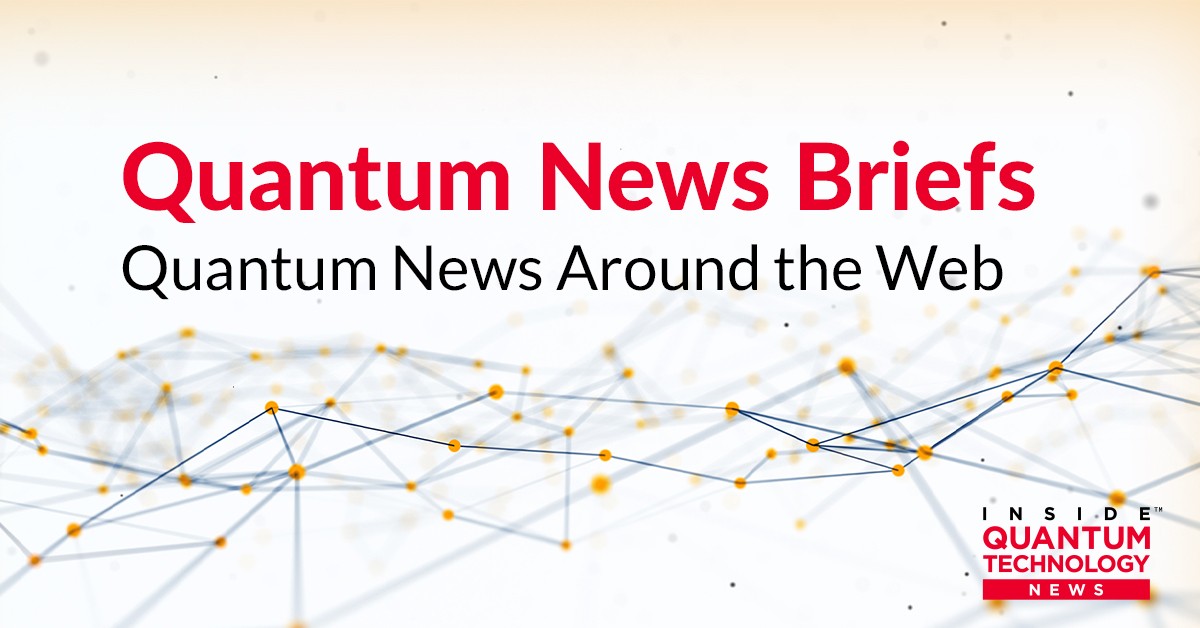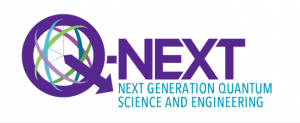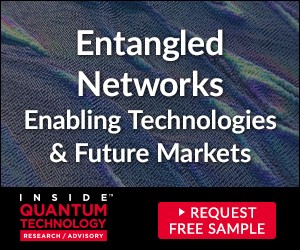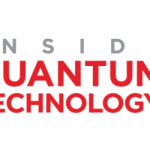Quantum News Briefs November 21: White House tells agencies to participate in post-quantum cryptography tests; Hewlett Packard Labs sets its sights on emerging quantum computing technologies; Amazon Web Services and Antia Lamas-Linares to bring quantum communication innovations to Q-NEXT + MORE

Quantum News Briefs November 21 begins with Federal News Network’s “White House tells agencies to participate in post-quantum cryptography tests” followed by “Hewlett Packard Labs sets its sights on emerging quantum computing technologies”; Third is a feature from Argonne Labs on :Amazon Web Services and Antia Lamas-Linares to bring quantum communication innovations to Q-NEXT” + MORE.
*****
White House tells agencies to participate in post-quantum cryptography tests
 The White House is encouraging agencies to work with software vendors to test out quantum-resistant cryptographic algorithms on their web browsers, enterprise devices, and other IT systems, as part of the Biden administration’s approach to preparing for a post-quantum world. Justin Doubleday at Federal News Network discussed in his November 18 article summarized below by Quantum News Briefs.
The White House is encouraging agencies to work with software vendors to test out quantum-resistant cryptographic algorithms on their web browsers, enterprise devices, and other IT systems, as part of the Biden administration’s approach to preparing for a post-quantum world. Justin Doubleday at Federal News Network discussed in his November 18 article summarized below by Quantum News Briefs.
The Office of Management and Budget in a Nov. 18 memo sets out new deadlines and guidance for agencies to prepare for quantum computers capable of breaking current encryption techniques that protect data and information systems.
“The testing of pre-standardized PQC in agency environments will help to ensure that PQC will work in practice before NIST completes PQC standards and commercial implementations are finalized,” the memo states. “Agencies, particularly CISA, are encouraged to work with software vendors to identify candidate environments, hardware, and software for the testing of PQC.”
Agencies could test out these new encryption techniques in a range of environments, including web browsers, content delivery networks, cloud service providers, devices and endpoints, and “enterprise devices that initiate or terminate encrypted traffic,” the memo states.
“A potential quantum computer by an adversary country is really a nuclear threat to cybersecurity, because the underpinning cryptography relies on a math principle that potentially a quantum computer could break,” Deputy National Security Advisor Anne Neuberger said at an event hosted by the Aspen Institute in July. Click here to read article in-entirety.
*****
Hewlett Packard Labs sets its sights on emerging quantum computing technologies
Kirk Bresniker, chief architect at Hewlett Packard Labs spoke with industry analysts John Furrier and Paul Gillin at SC22, during which they discussed the capabilities of quantum computing, challenges of developing quantum computing, and what’s on the horizon for Hewlett Packard Labs. Quantum News Briefs summarizes.
Even with its expansive capabilities, harnessing quantum computing has been a problem since it was first conceived more than 30 years ago. Low-level technology is, historically, one of the biggest aspects holding quantum computing back from its full potential, according to Bresniker.
Moving forward, HPE aims to take a leading role in the quantum computing market and recently invested in startup IonQ to ensure that happens. The company sees a future where HPE customers can select quantum accelerators as easily any other type of compute and consume quantum computing on an as-a-service basis.
The first emphasis for Hewlett Packard Labs is diversifying the application of novel computational approaches to demonstrate their abilities and potential, according to Bresniker. The second “is that edge-to-exascale workflow, I need to be able to harness all of those computational and data resources. I need to be aware of the energy consequence of moving data, of doing computation and find all of that while still maintaining and solving for security and privacy. Click here to read and watch the entire interview.
*****
Amazon Web Services and Antia Lamas-Linares to bring quantum communication innovations to Q-NEXT
 Earlier this year, the Q-NEXT quantum research center announced that Amazon Web Services (AWS) joined its growing collaboration. The partnership is not only an opportunity for Q-NEXT to leverage the resources of the world’s most comprehensive and broadly adopted cloud platform, but it is also a chance for AWS to connect with other institutions to accelerate the company’s quantum technology research and development.
Earlier this year, the Q-NEXT quantum research center announced that Amazon Web Services (AWS) joined its growing collaboration. The partnership is not only an opportunity for Q-NEXT to leverage the resources of the world’s most comprehensive and broadly adopted cloud platform, but it is also a chance for AWS to connect with other institutions to accelerate the company’s quantum technology research and development.
One of the people working to link the globe through quantum networks is AWS research scientist Antia Lamas-Linares, the lead for the AWS Center for Quantum Networking. Quantum News Briefs summarizes below a feature article by Leah Hesla from Argonne National Labs.
Lamas-Linares and her team encode information in the quantum properties of photons, the fundamental units of light. By enciphering information, they are working to explore how to store, control, compute and transmit information in powerful ways that can’t be achieved through traditional computing and communication.
A challenge of quantum technology is successfully transmitting the carriers of quantum information — the photons — over long enough distances. Say someone wants to send photons with encoded quantum information over fiber-optic cable. The weakness of the quantum signal limits how far the photons can travel without being absorbed in the fiber.
One solution is a quantum repeater, which Lamas-Linares and others at AWS are developing as a step toward practical, long-distance quantum networks. Like a horse ready to embark on one leg of a Pony Express route, a repeater refreshes the delivery of the message, ensuring it arrives at its destination intact.
it’s a good fit for Lamas-Linares, who came to AWS in 2021 with experience in both academia and industry. After earning her Ph.D. in physics from the University of Oxford and completing a postdoctoral appointment at the University of California, Santa Barbara, she moved to Singapore, where she co-founded the Centre for Quantum Technologies in 2003. After two further stints at research centers in the United States, she joined a Singapore-based startup called SpeQtral as chief quantum scientist, working on quantum connections for small satellites. At AWS, Lamas-Linares’ work combines the long-range perspective of academia with the consumer focus of industry.
“We’re in a privileged position because we are thinking about the customer needs, but we’re thinking long-term. Everybody here is aware that this is not like a 24-month life cycle. We work for a long-term vision,” she said. “If you’re in industry, you need a vision of where you want to arrive.” Click here to read original feature in-entirety.
*****
CloudBank Initiative Offers Researchers Access to Quantum Computing Resources
 CloudBank, a cloud access entity that helps the computer science community access and use public clouds for research and education via managed services – is designed to simplify access to emerging computational resources such as quantum computing.
CloudBank, a cloud access entity that helps the computer science community access and use public clouds for research and education via managed services – is designed to simplify access to emerging computational resources such as quantum computing.
“Getting access to quantum computing resources can be challenging,” said Deputy Director of the San Diego Supercomputer Center Shawn Strande. “Fortunately, public cloud providers are at the forefront of making these resources available to the community, and CloudBank with well-developed public cloud integration processes and tools makes it much easier to access and use these resources.”
According to Shava Smallen, computational and data research specialist at SDSC and co-PI of the NSF CloudBank project, CloudBank lowers barriers-to-entry and reduces friction for academic work in the cloud, supporting a range of users who look to the cloud for their computational work – from researchers and educators to small private colleges and large public institutions, as well as cloud beginners and pioneering experts.
Earlier this year, in a Dear Colleague Letter (DCL), the National Science Foundation announced its expansion of the CloudBank program to any active awardee funded by the Computer Science and Engineering (CISE) Directorate. It also streamlined the process for cloud requests.
A subsequent DCL letter focused on the accessibility of quantum computing resources was distributed in June and, while that specific opportunity has closed, researchers can still request quantum resources as active CISE awardees. This type of request is just-in-time as opposed to requiring PIs to budget for resources at the time of proposal submission in the hopes of maximizing the elasticity of the cloud and providing users with computing cycles when they need them. Click here for original article.
*****
Sandra K. Helsel, Ph.D. has been researching and reporting on frontier technologies since 1990. She has her Ph.D. from the University of Arizona.























